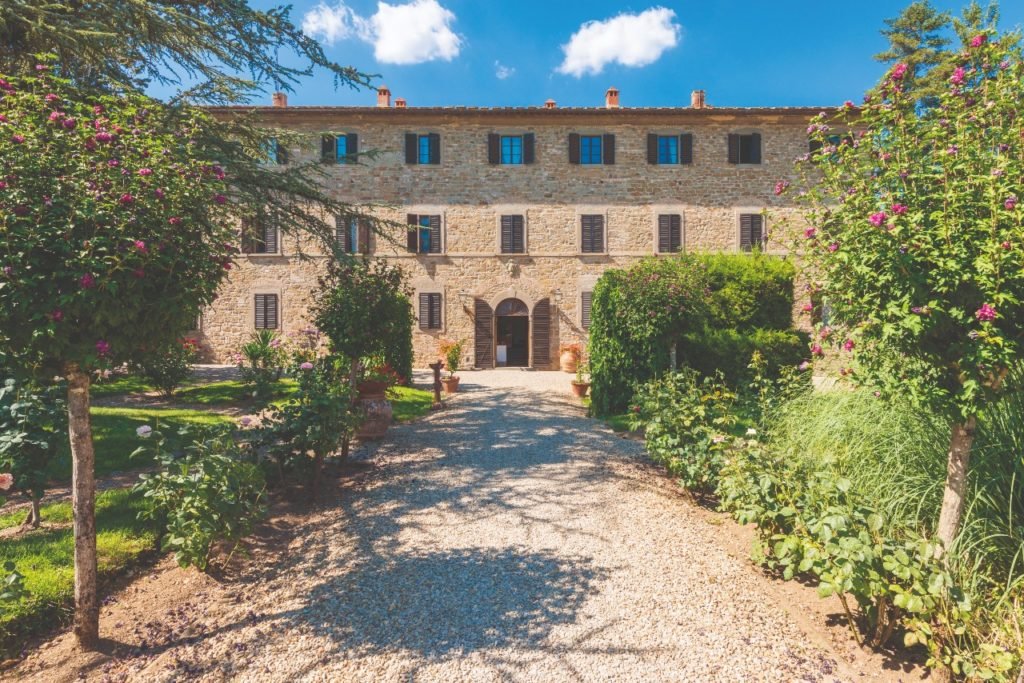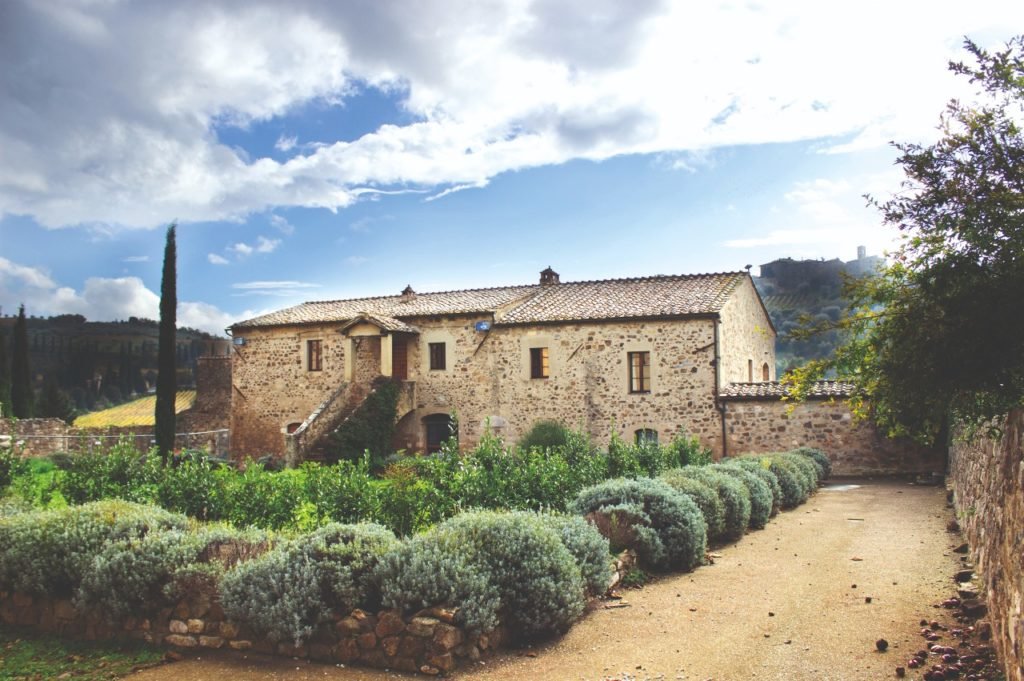
The most sought after
Farmhouses are the “dream” purchase. “For us, its characteristic shape of a cube divided into four rooms in the upper section, while downstairs, where the barn used to be, generally contains the living area” explains Mario Turchetti of Euro Etrusca in Lucignano. “The Aretine village, not yet been overrun by tourists, sits on a windswept hill at an altitude of 400 metres, does not get snow in the winter, and its property values are still affordable. From 1,500 to 2,000 euros for a farmhouse converted in the 1990s. perhaps in need of modernisation, up to 3 thousand euros per metre for those more recently restored”.
The most adaptable types, according to Rinaldo Turchetti and Maneiro Amazzoni of Casetoscane, an agency in the same town “date back to the 17th and 18th centuries and sometimes have a small tower: generally with an exposed stone facade, or stone and brick. Both Italians and foreigners have bought from us, but the most requested are almost impossible to find: 200 square metres, whereas there is not much problem finding 300-400 square metres”. Some real treasures are to be found in the Aretine city’s old town. Aristocratic homes such as those found in Via Matteotti, for which the in-demand style has one or two bedrooms with a garden, measuring between 70 and 150 metres. “Three ambassadors have bought here - Casetoscane’s owners tell us: to be more precise, an independent house, and an attic in an old 13th century convent”. Still in Lucignano, finally, Marco Tedeschi of Toscana Immobiliare , has a gem for sale: a leopoldine; a type of farmhouse that is hard to find on the market and with a particular charm, built during the process of draining and exploiting the agricultural exploitation of Valdichiana, from the first half of the 18th century until the mid 19th century.
The gardens of Tuscany
Simona Faleri of the Manini Group cites the ex-chairman of the region of Tuscany Rossi, who defined the South of the province of Siena as the “garden of Tuscany”: the greenest and most unspoilt part. And so, Montisi, in the district of Montalcino, a community of 100 inhabitants has grown in the last decade by another hundred residents, including British, Americans, and Belgians. “Foreigners who have come to Italy for two or three months holiday, who have then permanently relocated” the broker explains. Farmhouses generate an incoming from leasing. One of these (purchased for 700 thousand euros in the last few months, when COVID was in full swing, by a Danish family living in Dubai) in Torrita di Siena, which sleeps 10, a swimming pool and garden, renovated, is leased for 700 euros per day and is fully booked until the end of 2021. Just another in a seemingly endless list of examples that the second home market is dominated by Europeans.
Conversions are better
Italian buyers are also on the increase, from Rome, Naples, and Milan, attracted by the possibility of working remotely from the countryside, with prices between 400 and 800 euros. “Rising as high a 1.5 million euros for an high-end farmhouse with a swimming pool, and over two million euros for historic and special properties with excellent finishes” explains Luca Giovannelli of Casaitalia. Gabriele Carratelli, who runs the self-titled company specifies that “foreign clients prefer already renovated solutions, whereas Italians are split between those who love to carry out the work themselves, and those who prefer the works already completed”. Our fellow countrymen also seem more interested in the financial benefits, as observed by Francesco La Commare of FIAIP Siena: “With the 110% superbonus, in some homes you can achieve the energy and seismic efficiency of a building at almost zero cost; but there are always other types of bonuses for renovation, with advantages from 50-90%”.
A life choice: Cortona
Lorenzo Lucani of Toscana Servizi Immobiliari states that “Cortona is an authentic town, still populated by Cortonesi, with its own cobbler, carpenter, and shops that populate it all year round, and its extraordinarily beautiful countryside”. In short, an excellent form of investment in a city made famous by Frances Mayes’ 1996 book “Under the Tuscan Sun”, in which she writes about relocating to Italy after buying and renovating an abandoned rural villa in Cortona. “The local property market has picked up since June - continues Lucani - when foreigners began to return, believing at first that owners of farmhouse were more willing to negotiate; but at the high end of a million of euros, these properties have not suffered any drop in price, also because the belief that construction will pick up again in 2021”. And so the most requested type are farmhouses with terracotta floors, cypress trees and gardens between 250-350 metres, from the 19th century approximately, converted, with exposed beams. Prices fluctuate between 600,000 and 2 million euros.
Paolo Alunno, owner of Cortona Real Estate Alunno Immobiliare confirms that investors’ attention is focused on villages that are lively and dynamic at least 4 or 5 months of the year. “Villages where the hospitality sector is currently in difficulty, but which are seeing a resurgence in the market for second homes, as all those who have been trapped in the cities are wanting to live in extraordinary little villages such as this”. Experts also speak in certain cases of “a 10-15 percent fall in prices, except for farmhouses of a certain level, where the upswing is in effect. There are few requiring renovation, valued between 700-800 thousand and 1 million euros if you move away from the old town, rising to 1.5 million for well-converted properties with a swimming pool right in the centre”.

The alternative: Montepulciano
Where is it worth buying a farmhouse in the wine country around the Nobile Montepulciano or the Syrah of Cortona? Stefano Petri, CEO of the Great Estate Group replies “They both have so much in common: they share a similar history, culture, countryside, cuisine, and accommodation, as well as their international character. Anyone who buys in one of these two municipalities is investing in a high quality of life and a market that has corrected and will hold its value well in the face of any fluctuations. And excellent agricultural produce such as the Nobile di Montepulciano or the Syrah of Cortona is another reason, improving the quality of life of lucky new buyers”. In fact, in the last 10-15 years, Montepulciano and Cortona have been the most sought after destinations by international clients, a genuine mainstay of the prestige property market throughout the whole of Tuscany. “A few weeks ago, we sold a fantastic apartment in Cortona’s old town to an Italian-Argentine client, and an extraordinary farmhouse in Montepulciano to some German clients” Petri concludes.
Published on Ville&Casali november 2020
Continue reading on the digital version